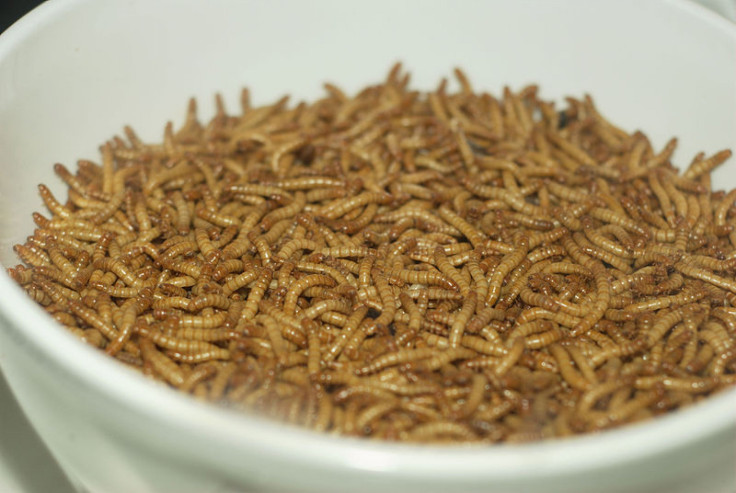Wormburger Anyone? Worm Meat More Sustainable Than Beef, Pork, Chicken and Milk: Study

The secret to truly sustainable meat isn't knowing the name of your organic chicken's therapist, Dutch scientists say – it's in a nice juicy wormburger.
Worldwide demand for meat is expected to rise between 70 and 80 percent by 2050, but livestock are already straining the environment, Wageningen University researchers Dennis Oonincx and Imke de Boer write in their paper published on Wednesday in the journal PLoS ONE.
Their analysis, the pair says, “demonstrates that mealworms should be considered a more sustainable source of edible protein.”
At present, livestock occupies about 70 percent of all agricultural land, and raising animals for meat contributes 15 percent of all human-generated greenhouse gas emissions. Clearing forests for livestock grazing also contributes to global warming by eliminating much of the tree cover that absorbs greenhouse gases.
Insect protein has sometimes been floated as a more environmentally friendly replacement for beef and pork, so Oonincx and de Boer set out to assess whether worms really would be a better alternative. They worked with a Dutch mealworm producer to compare the environmental impacts of worm farming to the costs of producing beef, pork, chicken or dairy, primarily on three lines: land use, energy use and greenhouse gas emissions.
They found that while raising mealworms requires about as much energy as raising other livestock – mostly to keep larvae heated properly -- they are less environmentally impactful in other ways.
“Production of one [kilogram] of edible protein from milk, chicken, pork or beef result in higher greenhouse gas emissions, require similar amounts of energy and require much more land,” the scientists wrote.
Though worms aren't a perfectly sustainable food, Oonincx and de Boer point out that chicken and pig farmers have used new technologies and scientific knowledge to improve their productivity by 2.3 percent each year over the last two decades. If mealworm producers improved their systems using automation, refining their worm feed recipes, and selecting particularly optimal strains of worms, then insects could become an even more attractive option.
But even now, the mealworm still comes out ahead, due to the fact that it takes much less land to farm worms than cows or pigs, the researchers say. On an Earth with a rapidly expanding human population, the competition for space will likely only become more dire in decades to come.
“The increasing world population will therefore need to be fed using the same area of land that is available now,” the authors wrote. “Mealworms require only 43 percent of the amount of land used for the production of one kg of edible animal protein as milk, and only 10 percent of the land used for production of beef.”
If you're ready to truly commit to a sustainable diet, you can find recipes for things like Mealworm French Fries and Banana Worm Bread at the website Insects are Food.
SOURCE: Oonincx et al. “Environmental Impact of the Production of Mealworms as a Protein Source for Humans – A Life Cycle Assessment.” PLoS ONE 7: e51145, 19 December 2012.
© Copyright IBTimes 2025. All rights reserved.





















